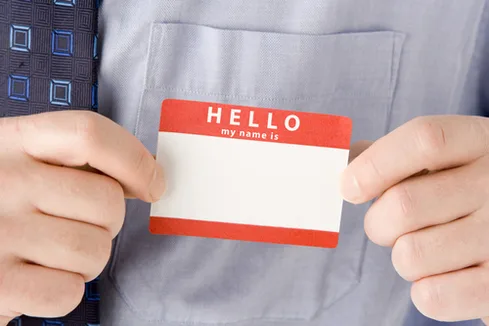 A few years ago a local consultant contacted me with a professional, yet direct email. It said, “Todd, thanks for sending me XYZ person my way. In the future, can you check with me first? I’m really busy for the next three weeks and I don’t have time for networking.”
A few years ago a local consultant contacted me with a professional, yet direct email. It said, “Todd, thanks for sending me XYZ person my way. In the future, can you check with me first? I’m really busy for the next three weeks and I don’t have time for networking.”
At first I was, admittedly, a bit annoyed. I was connecting a Founding CEO client to the consultant as a potential customer for him. In addition, the consultant had previously told me to send him anyone who might need his services. In my anger I silently fumed and resolved never to help him again.
As a Founding CEO, my time is very limited, just like the consultant in my story. It’s somewhat of a cliché now – time remains the fixed asset we all share. I’ve had the good fortune to interview over 50 Founding CEOs of fast growing businesses on my podcast, “From Founder To CEO.” Lack of time is a common theme amongst them. Those CEOs who thrive learn how to delegate, prioritize, and hire a great team. They are also adept at networking. Between fundraising, cultivating partnerships, and seeking more business, they are skilled in the art and science of e-introduction etiquette.
What exactly is an e-introduction?
What is good e-introduction etiquette? In my experience it is a combination of discernment, process, strategy, and respect.
Brad Feld recently was kind enough to be a guest on my podcast. He made a great point that cements my belief that networking, introductions, and connecting people are key skills CEOs need to grow their company. He said, “I believe that 2008 and 2009 was the point in time in which the importance of the network crossed over the importance of a hierarchy and the network became more important than the hierarchy.”
Who has the time to meet all the people you need to meet? It’s probably why e-introductions have proliferated so much. Do you know what an e-introduction is? Remember when you received that email from a friend or colleague that copied another person and which said, “Todd, you just have to meet XYZ. XYZ you have to meet Todd. I’ll let the two of you take it from there.” Connections have never been so valuable and perhaps never so easy to create. This “ease” can also contribute to troubles.
Steps to a better e-introduction
That brings me back to my original story. I was wrong. And, my expectations were out of whack. Since that incident with the local consultant, I have reflected a lot on the times others have effectively and gracefully handled the art and science of introducing me to valuable people through an e-introduction. In fact, many of the Founder & CEOs I have interviewed on my podcast have helped me create my guide for e-introduction etiquette.
- Are you cultivating the heart of a giver? – Are you looking to connect two people out of your belief that they both will benefit from it, or out of the belief that you will benefit from it? When your focus is on giving without getting, you’re likely to make a better match.
- Are you deliberately looking to make the best match of people based on both their mutual interests? – If you are not aware of the interests of the people you want to match, your e-introduction may be missing a key reason for the match.
- Are you clear about the “why?” – We are all inundated with email. Try to ensure your “point of connection” is clear, upfront, and compelling.
- Did you gain the permission of the people involved? This was my mistake. I assumed too much. Asking to make an e-introduction honors and respects others. Yes, it may take an additional email, phone call, Skype chat, or face-to-face meeting to obtain this permission, but the match is highly more likely to be a productive one if this is done first. In the case of my story, the consultant was just trying to manage his busy schedule without offending anyone who might be expecting to connect. And, remember, things change. So, just because someone said something two months ago, doesn’t mean it applies today.
- Do you follow up and ensure it was a good match? Feedback allows you to understand if your e-introduction had value to both individuals. After all, why make the introduction if it is not valuable to both individuals. Additionally, you get an opportunity to refine your skills at the e-introduction.
- Is this an introduction that should be made in person? – In my opinion not every introduction is appropriate for an e-introduction. You may need to make a more detailed case as to why both parties should get to know each other. Perhaps you are very close with both people and you want to do a better job of sharing how wonderful each person is and why it makes sense for them to get to know each other.
Number six is important. Introducing people should be handled with care. You are essentially transferring your relationship of trust and good will to two others. Your reputation is on the line, as was mine when I didn’t check in with the local consultant.
I probably leaned toward expediency rather than good will for all when I did not ask for permission from my consultant friend. I now strive to be better at the etiquette of the e-introduction. My hope is that this also helps you to reconsider your approach to the e-introduction.
After all, you have a lot of angel investors, venture capitalists, key customers, and even employees to meet. Enhance your ability to find the right ones with the power of good e-introduction etiquette.



Spot on! Great article and very insightful. I am going to share with my company. Thank you.
Thanks Matt. Glad it was helpful.